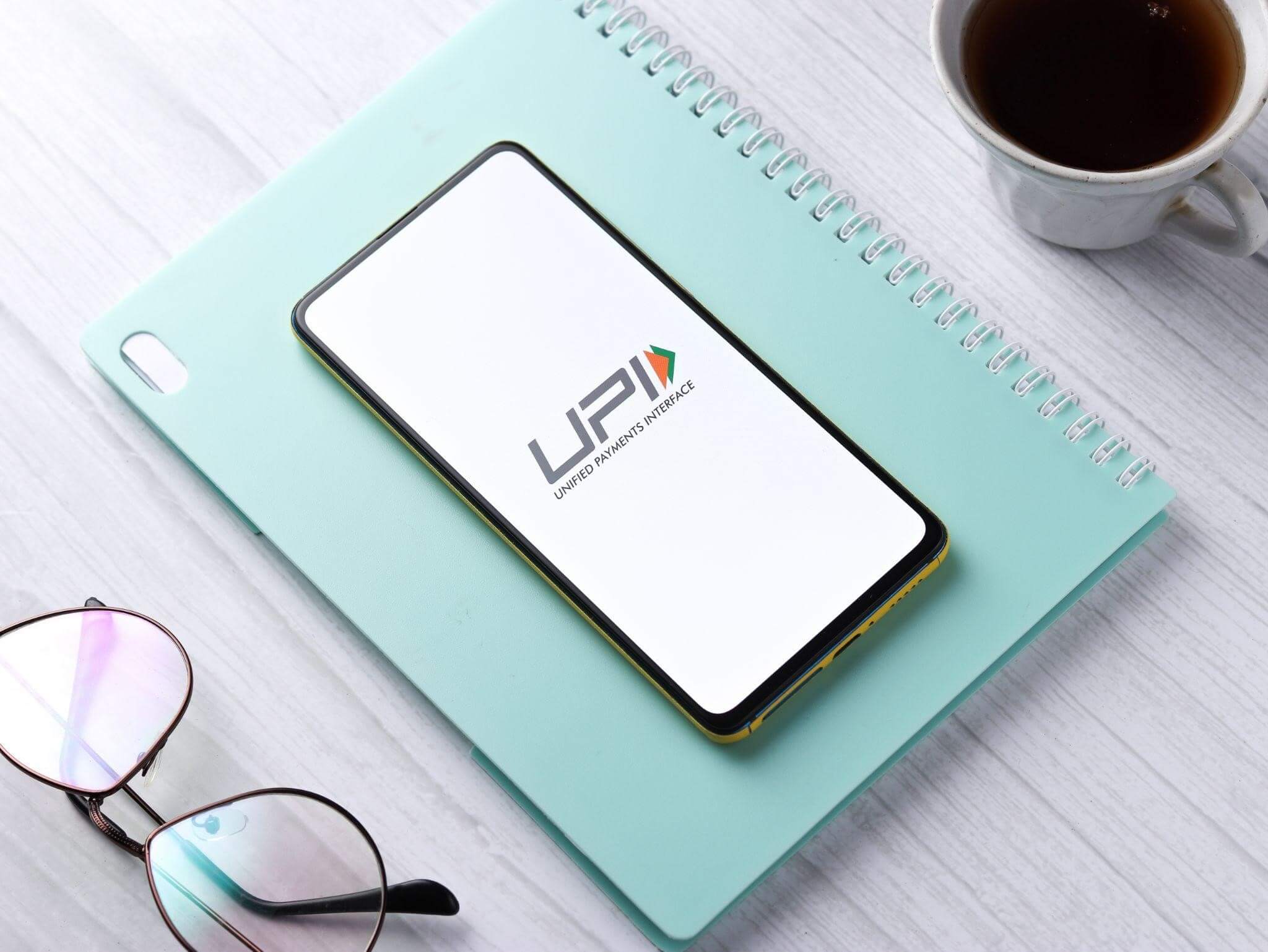What is VPA in UPI: How to Create VPA in UPI on Apps?

UPI ID or VPA full form (Virtual Payment Address) is a unique ID created by the user to send or receive money through UPI. The user can simply share his/her UPI VPA ID with the payer and receive payment directly in his/her bank account. Currently, users can only link UPI with bank accounts and debit cards. While the proposal of linking it with credit cards has been there, we can see it happening in the near future. Transferring funds to the VPA of UPI and not mobile number as there is always the risk of entering it wrong.
This blog gives detailed insights about VPA and its working. Let’s dive in!
What is VPA in UPI Payment?
A Virtual Payment Address (VPA) is a unique ID using which they can either receive or send money through UPI. This is the most sought-after model of payment among individuals or even merchants. The NPCI has defined the UPI transaction limit as Rs. 1 Lakh and 20 transactions per day. They introduced UPI autopay for recurring payments like electricity bills, EMI bills, etc.
How to Create VPA in UPI?
In order to create VPA ID follow the simple steps below:
- Step 1: Download the UPI-enabled app:
In UPI, a VPA is a digital payment through which a person can receive or send money. PhonePe, Paytm, the BHIM app, and GooglePay are among the apps that offer UPI functionality. They are available for download on both Android and Apple devices. - Step 2: Provide your Bank Account Details:
You must have a mobile number linked to all of your bank accounts in order to create a VPA username. - Step 3: Choose a VPA:
In UPI, VPA looks like xyz@bankname, where Xyz can be anything from your name to your phone number. This makes it easier to remember the VPA. - Step 4: Link VPA to Bank Account:
The next step is to associate bank accounts with the VPA ID. We can link multiple bank accounts to a single UPI-enabled app. This simplifies the process of sending money to anyone from any bank. Provide a distinct VPA and you will be approved instantly, granting you a Virtual Permanent Address. - Step 5: Submit Details for Verification:
This is where you set your pin for authenticating transactions in the app. This is a two-step authentication process, the first during app login and the second during fund transfer.
Also Read
How to Create VPA in Google Pay?
- Step 1
Download the Google Pay app
- Step 2
Launch the app on your phone, and then enter your mobile number to create a UPI ID.
- Step 3
Select your concerned bank linked to your mobile number
- Step 4
Next, you will receive an OTP via SMS or email for verification
- Step 5
Enter the OTP for verification then create your UPI ID (VPA), though Google Pay generally creates one by default on the basis of the user’s Gmail ID
- Step 6
Once UPI ID is created, you can transact with UPI
How to Create VPA in PayTm?
- Step 1: Download the Paytm app
- Step 2: To register for a new account and link it to Paytm UPI, enter your phone number.
- Step 3: Select your Bank Account
- Step 4: The application will automatically look for the bank account associated with the mobile number you provided when registering in the previous stage.
- Step 5: Next, you will receive an OTP via SMS or email for verification
- Step 6: To begin sending and receiving money, enter the OTP and create your own UPI ID.
- Step 7: You can create more UPI IDs using the same procedure
How to Create VPA in PhonePe?
- Step 1: Download the PhonePe app
- Step 2: Enter your mobile number linked to your bank account
- Step 3: Next, you’ll receive an OTP via SMS
- Step 4: Your PhonePe account should be created once the OTP is verified.
- Step 5: Then, from the list that appears, select your bank.
- Step 6: In order to search for your bank account associated with your mobile number, the app will prompt you to send an SMS. Click the ‘Continue’ button.
- Step 7: After that, enter your preferred VPA and you’re ready to go.
How to Send Money using VPA?
One can use VPA for payment in the following ways:
- Step 1: Log in to your UPI app with your PIN.
- Step 2: Choose UPI as your preferred method of fund transfer..
- Step 3: Enter the VPA of the beneficiary, the amount to be transferred, and any comments.
- Step 4: If you have more than one VPA, select the one associated with the bank account from which you want to pay and click Submit.
- Step 5: To validate, confirm the details and enter your MPIN.
How to Receive Money using VPA?
To receive money one can use a Virtual Payment Address in UPI for hassle-free transactions.
- Step 1: Install and sign in to any UPI-based mobile app.
- Step 2: Choose UPI, then select ‘Collect via UPI’.
- Step 3: Enter the VPA address of the person from whom you are requesting funds.
- Step 4: Provide the requested amount and include comments..
- Step 5: Choose the VPA address or account where you want the funds sent.
- Step 6: Send the needed information, then wait for a response.
The sum is credited to the account of your choice once it has been approved by the person from whom you are asking the money.
How is VPA in UPI Transaction Processed?
UPI VPA simplifies the UPI Process for everyone to use on a daily basis. People are shifting to digital payments because the process is simple. As we previously discussed, you can use any of the VPA UPI apps that are available for use in the transaction. When you open them, it will prompt you to enter the first step of verification. This will direct you to the app, where you will see a new payment option. Money can be transferred through a bank transfer, a phone number, a UPI ID, or a QR code. You must click on UPI ID, which prompts you to either enter your UPI ID or open the code scanner. Merchants commonly use code scanners, which allow customers to scan and pay quickly. The second verification step appears after entering the UPI ID and clicking on continue. Enter the verification Pin, and you’ll see whether or not the money has been transferred in a matter of seconds. You can keep track of all the payments you made using VPA.
Benefits of Having VPA in UPI
- Registration Process: Registering for a VPA username is easy for both the payer and payee. The simple procedure of entering the VPA username and making payment in a moment makes it the most desirable digital payment mode. In India, you can see small vendors on the street using UPI, which shows the potential and market penetration.
- Access: The best part of using VPA in UPI is that you can make payments 24 x 7 and from any location with a proper internet connection. You just need to remember the transaction limit per day.
- Making India Cashless: The UPI platform doesn’t transfer your cash to the wallet. Instead, it retains them in your bank account, which helps in earning interest.
- Security: If you make any purchase with a debit or credit card, there is always a risk of the card being duplicated. In VPA UPI, funds will be transferred only after entering the PIN you set while installing.
- Multiple Bank Accounts: Each UPI platform has the option to add multiple bank accounts, and each bank has a unique VPA username. This helps us to make payments from any bank in just one easy step, which again makes it easy to use.
- Acceptance: Sometimes, people forget their debit or credit card when they go shopping. In those situations, VPA in UPI helps you to make payments quickly from your mobile phone.
- Reduces Time: In Earlier days, while making payments online to any individual or merchant, we needed to enter the beneficiary name and account number IFSC code. This used to take time, and there was always the risk of entering any one of them wrong. VPA removes this problem by asking just the UPI username to transfer the amount.
- Account Holder Name: VPA UPI uses a single name for all transactions and keeps them recorded in one place.
VPA in UPI Types and Their Usage
The Virtual Permanent Address VPA in payment can be dissected into three categories:
1. Peer to Peer (P2P)
Peer 2 Peer is where you transfer funds from one individual to another. The best example would be transferring money to your friends, family, or any individual through the UPI-enabled app.
2. P2M – Peer to Merchant
In this mode, the VPA in UPI is created by banks by registering the merchant who helps an individual to transfer funds to a merchant. This can be best used while purchasing any goods, and while paying, we can scan the QR code of the merchant and make the payment. In India, many merchants use this mode irrespective of the business size.
3. P2M-V – Virtual Peer to Merchant
In this mode, we can see that a virtual account is created when an already existing P2M VPA is mapped to numerous VPAs. In this, you can assign a VPA for UPI to unique each person who is supposed to make a payment to you. You can then send them reminders on message/WhatsApp with their unique VPA ID, and once they make that payment, you will receive a notification.
The best example could be a telecommunication company that needs to collect monthly or quarterly charges for their service. You can assign a VPA unique to each customer and send them a UPI ID through message/Whatsapp or even email when their payment is due. When they make the payment, you will be notified via webhooks.
VPA Suffixes in Some Common Banks
- PNB UPI: @PNB
- SBI Pay: @SBI
- BHIM: @upi
- HDFC Bank UPI: @HDFC
- Axis bank: @axis
- Paytm Payment Bank – @paytm
- Bank of Baroda: @barodapay
- Yes Bank: @YBL
- Google Pay (Tez) – Suffixes depend upon your bank.
Final Word
VPA full form in banking is a virtual permanent address. It is a payment address that helps users transfer funds using UPI platforms. VPA in UPI is a huge step toward making transactions faster, quicker, and more secure. There are plenty of UPI platform options in the market, and users can choose one or more for their daily use. With a stable internet connection and a registered merchant for VPA, you can make payments anywhere. Though Virtual Permanent Address (VPA) reduces the fraud which happens with duplication of debit/credit cards, there are still finance frauds happening, which can be tackled only by being vigilant.
FAQs
You can simply open the UPI app and disable that particular VPA, or you can use net banking for the same.
You can open the UPI app and either edit or change which can be found under settings.
It is secure to perform transactions through UPI enabled app until the PIN of the user is kept confidential.
No, your VPA won’t get lapsed even if you don’t use it for a year.
No, VPA is enough to transfer the funds from one individual to another.
Check with the bank, e-wallets, or payment apps with which you have registered to find your VPA. To locate your VPA, log in to your online banking account. You can also find the VPA in the account section of your e-wallets or payment apps.
Yes, VPA and UPI ID are the same thing. VPA is essentially a UPI ID that can be used to send and/or receive money through UPI.
Before you go…
- Looking for instant ? personal loans 24*7 anywhere, anytime? Install the Navi app now!
- Or, maybe you’re looking to buy that house you’ve been eyeing ? and
you need a loan of up to Rs.10 crore. Install the Navi app now and get instant in-principle approval right away! Interest rates starting at 6.95% p.a. - How about an affordable health insurance policy ?⚕️ starting at a monthly premium of just Rs. 241? Install the Navi app now and get your policy in under 2 minutes.
- Instead, want to put your savings into action and kick-start your investment journey ? But don’t have time to do research. Invest now with Navi Nifty 50 Index Fund, sit back, and earn from the top 50 companies.
This article has been prepared on the basis of internal data, publicly available information and other sources believed to be reliable. The information contained in this article is for general purposes only and not a complete disclosure of every material fact. It should not be construed as investment advice to any party. The article does not warrant the completeness or accuracy of the information, and disclaims all liabilities, losses and damages arising out of the use of this information. Readers shall be fully liable/responsible for any decision taken on the basis of this article.

Customer’s Feedback
No comments found.10 Best Bank for Savings Account in India [Highest Interest Rate 2023]
Savings account is a type of financial instrument offered by several banks. It lets you safely depo... Read More »What is Issuer Identification Number (IIN)- Working and Importance
What is an Issuer Identification Number (IIN)? Banks and financial institutions assign a distinc... Read More »What is a Vostro Account – Meaning, Working and Difference
What is a Vostro Account? A Vostro account is a bank account held by a domestic bank on behalf o... Read More »What is a Solvency Certificate? – Format, Documents Required & How to Apply Online?
What is a Solvency Certificate? A solvency certificate is a legal document furnishing the detail... Read More »What is Merchant Banking – Services, Features, Functions and Example
What is Merchant Banking? Merchant banking is a set of select banking and financial services off... Read More »Automated Clearing House: Objectives, Types and Process
Automated Clearing House is an electronic fund transfer network that manages automatic and direct... Read More »How to Redeem Credit Card Reward Points ?
Credit Card Reward points are types of incentives that customers receive when they use a credit car... Read More »What is Electronic Clearing Service (ECS) in Banking and How does it Work?
What is Electronic Clearing Service (ECS)? Electronic Clearing Service (ECS) is a method of elec... Read More »What are Credit Card Validators and How to Use them?
What is a Credit Card Validator? A credit card validator is a tool that checks the validity of a... Read More »What is Cash Management and How Does it Work?
Managing available capital can make sure that a small business stays afloat. Cash management is an ... Read More »What are Prepaid Expenses? – Definition, Examples, and Journal Entry
Prepaid expenses represent payments made in advance for products or services expected to be incurre... Read More »Increase Credit Card Limit – Important Tips and How to Do It?
The credit card limit is the maximum amount of money you can spend using your credit card. Your cre... Read More »Top 10 Chit Fund Schemes in India in 2023
Chit funds are one of the most popular return-generating saving schemes in India. It is a financial... Read More »10 Best Gold ETFs in India to Invest in April 2023
Gold ETFs or Gold Exchange Traded Funds are passively managed funds that track the price of physica... Read More »10 Best Demat Accounts in India for Beginners in 2023
Creation of Demat accounts revolutionised the way trades were conducted at the stock exchanges. It... Read More »20 Best Index Funds to Invest in India in April 2023
What is an Index Fund? An index fund is a type of mutual fund or exchange-traded fund (ETF) that... Read More »Best Arbitrage Mutual Funds to Invest in India in April 2023
Arbitrage funds are hybrid mutual fund schemes that aim to make low-risk profits by buying and sell... Read More »10 Best SIP Plans in India to Invest in April 2023
What is SIP? SIP or Systematic Investment Plan is a method of investing a fixed amount in ... Read More »10 Best Corporate Bond Funds in India to Invest in April 2023
Corporate bond funds are debt funds that invest at least 80% of the investment corpus in companies ... Read More »10 Best Bank for Savings Account in India [Highest Interest Rate 2023]
Savings account is a type of financial instrument offered by several banks. It lets you safely depo... Read More »





















